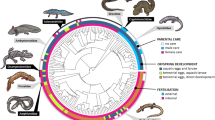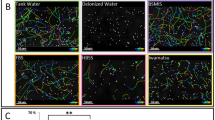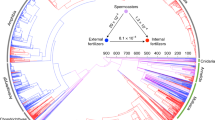Abstract
ORTON1 suggested that protandrous animals might be self-fertilizing and that this would be advantageous for the spread of a species. He concluded that Crepidula fornicata was self-fertilizing because he found an isolated female guarding veliger larvæ. I have kept single Crepidula in aquaria and they have laid fertilized spawn two to three months later. Chipperfield2 found no unfertilized eggs but he examined only unbroken chains from a densely populated area. Wilczynski3 has recently said that the typical chains are feeding communities, not breeding associations and that copulation is effected with additional or visiting males. In Calyptraea chinensis (L.) males and females begin to associate seven months before spawn is laid4. Females probably store foreign sperms for long periods. Evidence for self-fertilization in Crepidula is therefore still lacking.
This is a preview of subscription content, access via your institution
Access options
Subscribe to this journal
Receive 51 print issues and online access
$199.00 per year
only $3.90 per issue
Buy this article
- Purchase on SpringerLink
- Instant access to full article PDF
Prices may be subject to local taxes which are calculated during checkout
Similar content being viewed by others
References
Orton, J. H., Nature, 169, 279 (1952).
Chipperfield, P. N. J., J. Mar. Biol. Assoc. U.K., 30, 49 (1951).
Wilczynski, J. Z., Bull. Biol., 109, 353 (1955); J. Exp. Biol., 36, 34 (1959).
Wyatt, H. V., Ann. Mag. Nat. Hist. (in the press).
Author information
Authors and Affiliations
Rights and permissions
About this article
Cite this article
WYATT, H. Protandry and Self-Fertilization in the Calyptraeidae. Nature 187, 520 (1960). https://doi.org/10.1038/187520a0
Issue date:
DOI: https://doi.org/10.1038/187520a0



